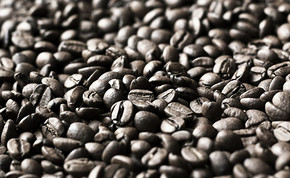Which kind of Colombian coffee beans is good?
Follow the caf é (Wechat official account vdailycom) and found that Beautiful Cafe opened a small shop of its own.
The history of coffee cultivation in Colombia can be traced back to the Spanish colonial era in the 16th century. It is said to have come from the island of Haiti in the Caribbean and by sea through El Salvador in Central America. Like other Latin American countries, the coffee breed in Colombia is mainly Arabica coffee (coffea arabica), that is, small fruit coffee, while the relatively large fruit coffee (coffea robusta) is mostly grown in Africa of origin, such as the famous Madagascar coffee. There are several varieties of small fruit coffee. Brazilian coffee, which has the largest output in the world, has larger seeds, stronger adaptability and high fruit yield; by contrast, the mild coffee produced in Colombia is a more high-quality variety, which is of course related to its special geographical location and climatic environment.

Coffee trees in Colombia are mainly cultivated in the Andes, on steep slopes about 1300 meters above sea level, where the annual temperature is about 18 degrees Celsius and the annual rainfall is 2, 000 to 3, 000 millimeters, which is very suitable for the growth of coffee and can be harvested regardless of season. This is why Colombian coffee is of high quality.
Colombia
Named after the producing country, produced in southern Colombia (the country is the second largest coffee producer in the world), cultivated in the Andes more than 1000 meters of plateau, the annual output is rare and precious, also known as "emerald coffee".
Features: the color is clear and transparent, the bean seed is equal in size and complete in shape, like the round and transparent beauty of "jadeite". The taste of sour, bitter and sweet is strong and strong, and the color is like brewed wine.
Colombia produces a wide variety of coffee on small-scale farms and is the third most productive in the world.
Colombian coffee accounts for about 10% of the world's coffee production, and about 2 million people in Colombia depend on coffee production.
Caffeine makes a living. So for Colombia, coffee production plays a very important role in the national economy. In addition to Brazil and Vietnam, which rank first and second, Colombia is the third largest coffee producer in the world.
But compared with Brazil, Colombia does not have as many farms that produce coffee on a large scale, and many are small and medium-sized farms run by farmers known as "Cafetero". Small-scale farms produce a wide variety of coffee and are the third most productive in the world. It is precisely because the coffee produced by small and medium-sized farms is of better quality. The National Union of Colombian Coffee growers (FNC) is also stepping up its project to establish classic coffee, allowing only high-quality beans that have undergone rigorous quality checks.
Important Notice :
前街咖啡 FrontStreet Coffee has moved to new addredd:
FrontStreet Coffee Address: 315,Donghua East Road,GuangZhou
Tel:020 38364473
- Prev

The flavor of Colombian coffee beans
Following Cafe Review (Wechat official account vdailycom) found that Columbia Coffee has a bitter experience of opening a small shop of its own. Clear and astringent are like life, while bitterness is necessary in life. The last fragrance at the root of the tongue is a thorough reminiscence of the past. Suffering is pain, clear and quiet, the last fragrance has become a kind of spiritual victory. Brother Emerald Coffee
- Next

Colombian coffee beans hand-flushed
Follow the caffeine review (Wechat official account vdailycom) found that the beautiful cafe opened a small shop of its own, the calculation of caffeine content in a cup of coffee: coffee beans (grams) the percentage of caffeine in this kind of beans. In other words, if you use 18 grams of Yega to make coffee, regardless of hand brewing, siphon, French pressure, Italian machine, American machine, and Philadelphia pressure, you use Yega's 1.4% caffeine ratio.
Related
- Detailed explanation of Jadeite planting Land in Panamanian Jadeite Manor introduction to the grading system of Jadeite competitive bidding, Red bid, Green bid and Rose Summer
- Story of Coffee planting in Brenka region of Costa Rica Stonehenge Manor anaerobic heavy honey treatment of flavor mouth
- What's on the barrel of Blue Mountain Coffee beans?
- Can American coffee also pull flowers? How to use hot American style to pull out a good-looking pattern?
- Can you make a cold extract with coffee beans? What is the right proportion for cold-extracted coffee formula?
- Indonesian PWN Gold Mandrine Coffee Origin Features Flavor How to Chong? Mandolin coffee is American.
- A brief introduction to the flavor characteristics of Brazilian yellow bourbon coffee beans
- What is the effect of different water quality on the flavor of cold-extracted coffee? What kind of water is best for brewing coffee?
- Why do you think of Rose Summer whenever you mention Panamanian coffee?
- Introduction to the characteristics of authentic blue mountain coffee bean producing areas? What is the CIB Coffee Authority in Jamaica?

